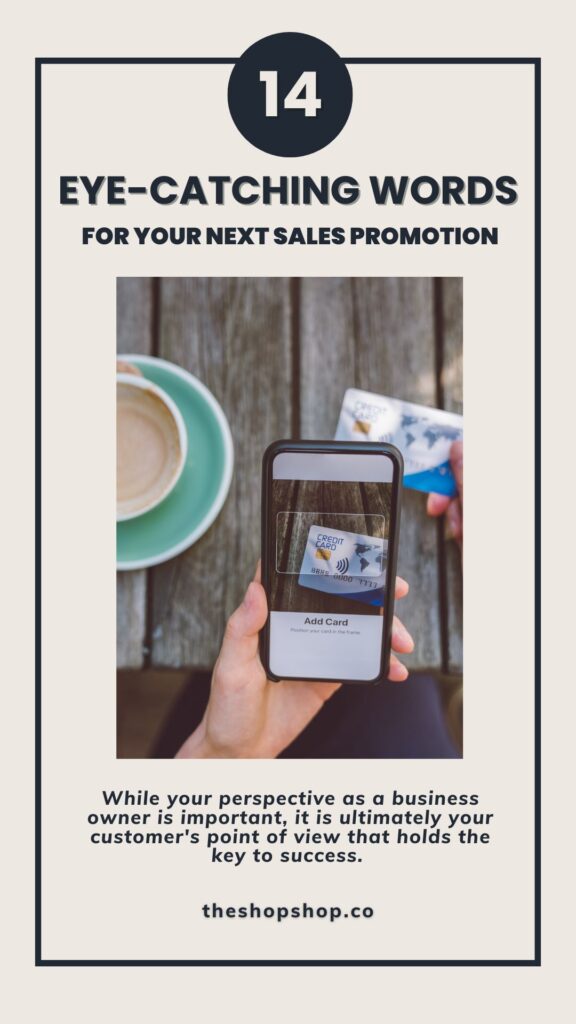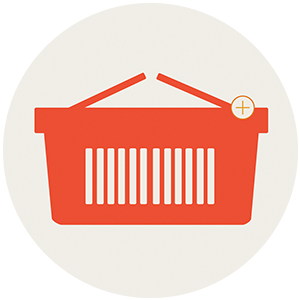One of my pet peeves in the client review process is when someone does an informal survey. Essentially, the client takes a sales promotion and passes it around their office (or sends it to their spouse or their mom) looking for feedback. Methodology aside, this really only works when the reviewers have the same point-of-view as your target audience. Otherwise, you’re just taking a poll of random opinions over drafting marketing materials with intention. They weren’t a focus group. They’re just people giving their thoughts without any stake in the success of the project.
You Are Not Your Customer
Sometimes business owners share traits with their customer but, often the person approving marketing materials is not exactly the same as their target audience. At the very least, your goals and theirs are not the same. Regardless, your customer’s point of view is crucial to the success of your business.
Understanding Customer Needs
One of the primary reasons your customer’s point of view is essential is that it helps you understand their needs. Stepping into your customer’s shoes provides valuable insights into what they truly want and how they perceive your products or services. This understanding allows you to tailor your offerings to better meet their needs, leading to increased satisfaction and customer loyalty.
Enhancing Customer Experience
Focusing on the customer’s perspective enables you to enhance their overall experience with your brand. By considering their journey from initial contact to post-purchase support, you can identify areas for improvement and create a seamless, enjoyable experience. A positive customer experience encourages repeat business and generates positive word-of-mouth referrals.
Building Trust and Credibility
When customers feel heard and valued, trust and credibility naturally follow. By prioritizing their feedback and opinions, you demonstrate respect for their input and a commitment to delivering value. This trust is fundamental in building long-lasting relationships and can differentiate your business from competitors.
Adapting to Market Changes
The business landscape is continually evolving, and staying attuned to your customer’s point of view can help you adapt to these changes. Customers’ preferences, behaviors, and expectations shift over time, and businesses that listen and respond to these shifts are better positioned to remain relevant and competitive. Valuing your customer’s perspective ensures that your business remains agile and responsive to market demands.
Driving Innovation
Innovation often stems from understanding and solving customer problems. Engaging with customers and considering their viewpoints can identify unmet needs and areas for improvement. This process inspires creative solutions and drives innovation within your business, leading to new products or services that better serve your customer base.
Writing Copy for A Sales Promotion
If you do want to speak directly into the heart of your audience, you have to understand them. And often, their ideals, worldview, and behaviors differ from your own as the business owner. You can avoid promotional pitfalls by viewing your marketing materials through this filter.
Cultural Terms
Early in my career, I put together two versions of the same ad. One was in English and the other in Tagalog. When I sent the proof back to the client, he was dismayed. All of the prices on both ads ended in a zero or a nine. No one had told me that we always adjusted the prices on the Tagalog advertisement to end in eights.
The reason?
Culturally, the number eight was considered lucky. It’s a little above my head but, the shape of the 8 is similar to symbols for prosperity. Whether consciously or unconsciously, the audience would have more positive feelings toward the advertisement if the prices ended in 888.
I quickly learned the value of partnering with someone on ads that required cross-cultural communication on my part. Everything from color, to shapes, to translations matters if you want an ad to resonate.
Free
People are skeptical of this word. With so many bait-and-switch offers, the word has become polarizing. Some people will always chase down a “free” offer. Others will ignore it and assume there is a scam.
Also, it is an appeal to cheapness.
If you have a high-value brand, avoid using this term as part of an offer. Switch to “complementary” or something similar.
If you are targeting a glass-half-full, price-comparison audience, they will lock onto the word.
Limited
Signaling exclusivity, “Limited” only works when you truly have an end to the product or offer. The term has become a powerful way to generate buzz, like with seasonal food and drink offers (Hello Pumpkin Spice Latte!).
Online, forced sell-outs are becoming a trend to create envy and exclusivity on social media. Nothing creates that #FOMO vibe as much as not getting the hottest product drop.
If you want to use this term, make sure your offer is valuable and in proportion to the market. Plan carefully for a rush, online or in-store, to mitigate complaints.
New
The signal “new” works best when people are already familiar with, and even moderately loyal to your brand. Otherwise, it can become a detractor. In general, people adopt new things on a curve (especially with technology).
However, if you want to delight your current customers, make them aware of new releases. In fact, a basic new inventory campaign encourages repeat sales.
Now
One of my college professors was a die-hard for “adding urgency.” Words like “Now” or “Today” subconsciously signal that the offer will come to an end. Similar to “Free”, the term works best on “everyman” buyers.
It doesn’t fit as well with a luxury brand or a high-dollar purchase.
For impulse buys or emotional decision-making, “Now” sets a time limit on the purchase.
Only
I remember disagreeing with a client over the term “only.” He was a luxury car dealer and wanted to expand his sales during the 2008-2009 recession. He broke down the payments to be “only” a certain amount per day. However, in the zip code, he was targeting that amount was about half of what the median income person made each day.
In that case, the “only” would have backfired for being out-of-touch.
In principle, “only” works when you understand the limits of your audience’s budget.
Questions
Questions are tricky.
In ads, they do create interest. They’re easy to read and draw the reader through to the end of the statement. For search, questions in body copy tend to perform well because they mimic what users write.
The problem?
They ask your reader to think. They have to ponder and formulate a mental response. If the offer is worth that mental investment, questions work well. If it’s a flippant message, a statement often works better.
Sale
Similar to “Free”, sales have a mixed effect on brands. Several years ago, J.C. Penny really tested the limits of the “sale” concept by declaring “no more sales” just low prices all the time. They added garish, price-oriented messages all over their department stores.
The result?
The brand was weakened and cheapened just as the recession was starting to end.
Similarly, brands must be careful with how they use sales. If you run them constantly, they have less value each time. Balance the sales offer with announcements for new inventory to avoid cheapening your brand.
Sexy
A word that used to be taboo, sexy has become so overused it’s almost meaningless. I even have clients who work conservative fields in education or engineering tell me “I want my brand to be more sexy.”
So what does “sexy” even mean, anymore?
That’s kind of the point. The term works best in two contexts — straightforward or ironic. For example, if you have a boudoir photography business, “sexy” definitely applies. If you are promoting the revival of fanny packs on dadbods, the term also may apply.
Together
The word “together” has risen in popularity in our increasingly isolated culture. Bringing people together, doing things together, has become a novel concept.
While the term is quickly sliding into overuse, it can be used to subconsciously signal concepts like cooperation and community. These are the heartbeat of the average millennial. If you want to recruit or draw them into a cause, “together” is a strong term.
Try
Much like a question, the word “try” asks your audience to work. If someone is adventurous, it’s an attractive term. They like the idea of experiencing new things and taking risks.
Some people, by contrast, will never “try” a new product or service. They use the same detergent as their mom or stuck to Gillette for 20 years because it was their first razor.
If your audience is an “early adopter” or adventurous, the term is attractive. For the rest, it’s stressful.
Up To
This term and similar phrases, like “as low as”, have drawn the scrutiny of the FTC for several years. While some of the regulations vary by state, I advise clients to stay away from unclear claims.
My reason?
They create an unpleasant interaction at the point of purchase. You don’t want to associate confusion with the buying experience if you want a repeat customer.
Why
Ever since the DOVE commercials went viral, brands have been trying to dig deep and create authentic experiences. Or at least, they want to mimic that brand position. In turn, “why” questions have been popping up in a lot of messages.
Like any question, this word asks your audience to engage mentally. So, the timing of the message matters. Otherwise, your reader will disengage quickly.
You
Writing in the second person invites the audience to a conversation. Instead of making a declaration, it speaks directly to the person. If you choose to use “you” it makes the language less formal. However, that lack of distance can be more engaging.
The term is a good fit for brands who want to speak personally and casually with their audience.
The Takeaway
While your perspective as a business owner is important, it is ultimately your customer’s point of view that holds the key to success. By prioritizing their needs, enhancing their experience, building trust, adapting to changes, and driving innovation, you can create a thriving business that resonates with your audience. Remember, when you put the customer first, everyone wins.
About The Shop Shop
At The Shop Shop, we specialize in retail marketing — offering strategic services and flat-rate packages for shop owners, artists, and makers. We’ll come alongside your team to help you get more out of your website, social media, and email marketing. Everything we do fits seamlessly with your in-store promotions or online drops to create a captivating shopping experience. Partner with our Lynchburg Marketing Agency and let’s redefine the future of retail together.

Understand Shopping Trends
We’re dropping our next newsletter in July 2025. Sign up for exclusive freebies, giveaways, and industry insights.


